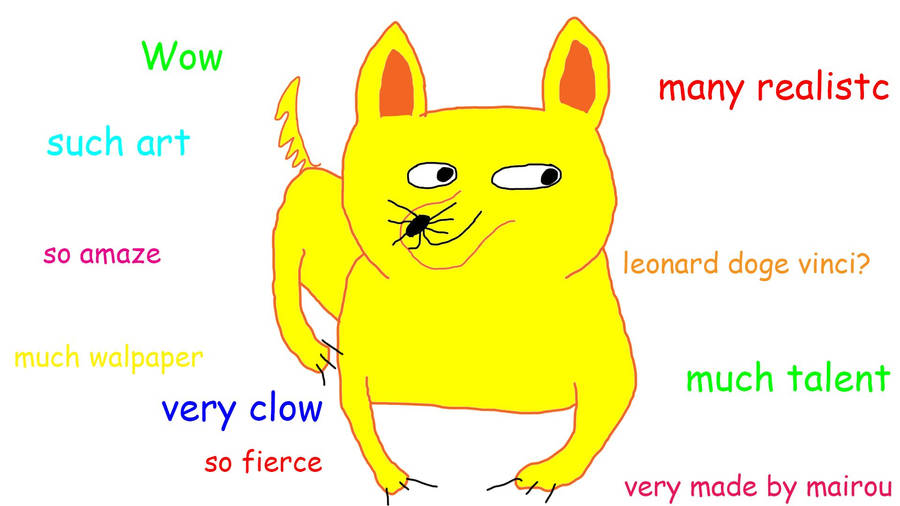Be it in the laboratory of a scientist or studio of an artist, similar processes are at work. They both possess an eye for detail. An artist's keen sense of perspective is critical for capturing on canvas the image of the eye.
Perspective is one technique that can make artist's work seem real, give depth and also make people go wow. Early 13th and 14th century artists used lines that splayed rather than converge when they approached horizontal lines. This could be considered a major step towards the beginning of perspective drawing. Real change came during the renaissance period with the invention of linear perspective.
 Linear perspective is a mathematical system of projection of three dimensional object on two dimensional surface. You begin with, say a horizon line which is effectively defining the farthest distance of your background and a central vanishing point. The foreground of the space is the bottom of the picture plane, from here orthogonals are drawn to the vanishing point. All these elements (horizon line, vanishing point and orthogonals) establish the space of the artist. The figures and object drawn in this space appear to exist in 3D.
Linear perspective is a mathematical system of projection of three dimensional object on two dimensional surface. You begin with, say a horizon line which is effectively defining the farthest distance of your background and a central vanishing point. The foreground of the space is the bottom of the picture plane, from here orthogonals are drawn to the vanishing point. All these elements (horizon line, vanishing point and orthogonals) establish the space of the artist. The figures and object drawn in this space appear to exist in 3D. Suppose the artist want to further complicate the space, for example in representation of square tiled floor. He chooses distance point on the horizon line and connect the bottom of picture plane through the orthogonals. The points at which orthogonals bisect the line establishes horizontal lines called transversals. these lines perspectively represents the square tiles in space
This is the sweet spot where we find the link between the science of 3-D geometry and illusionstic representation
But all this we read above is not enough to analyse the masterpiece Las Meninas. The beauty of this piece is in its numerous elements and spotting the perspectives involved.
 Diego Velázquez’s was an artist in the court of King Philip IV of Spain. He painted numerous paintings, but this continues to remain the most remarkable painting of all.
Diego Velázquez’s was an artist in the court of King Philip IV of Spain. He painted numerous paintings, but this continues to remain the most remarkable painting of all.I suppose, in the first glance it doesn't seem that exemplary at all.
Being a court painter it isn't surprising that Velásquez choose the scene at palace to display his skill set and experience.
 There are 11 characters in his painting. The focus of this picture immediately falls on the little princess Infanta Margarita Teresa.
There are 11 characters in his painting. The focus of this picture immediately falls on the little princess Infanta Margarita Teresa.She seems to be geometric centre of the canvas. She is illuminated by the light from the window on right.
Apart from the princess there is an obvious pairing of the characters in the canvas.Like the two dwarfs (4 &5), the chaperones(6 &7), the maid and the man at the door way, the king and the queen on the mirror(10 &11), finally the maid and Velázquez himself (3 &9).
So these pairs accentuate princess as the focus of the painting.
But this is where Velázquez takes perspective to another level. There are multiple weights of focus on his painting. Its not just on the princess.
 What elevates this painting, as much as it confuses, is the mirror
that forms the space between background and foreground. The mirror
reflects the Royalty that is King Philip and Queen Mariana. It takes
the viewer to a space outside of the painting. But this where the
unresolved mystery lies. The reflections on the mirror, will put the viewer in the feet of royalty. But closer analysis leads us to conclude the actual vanishing point for the viewer is the door way in the background.
What elevates this painting, as much as it confuses, is the mirror
that forms the space between background and foreground. The mirror
reflects the Royalty that is King Philip and Queen Mariana. It takes
the viewer to a space outside of the painting. But this where the
unresolved mystery lies. The reflections on the mirror, will put the viewer in the feet of royalty. But closer analysis leads us to conclude the actual vanishing point for the viewer is the door way in the background. These multiple focal points increases the viewing experience. There are questions regarding the light reflecting of the mirror. Is the mirror reflecting the canvas Velazquez is working on? If it is, then where is the actual painting of King Philip and Queen Mariana, which apparently doesn't exist because Velásquez never painted one.
These multiple focal points increases the viewing experience. There are questions regarding the light reflecting of the mirror. Is the mirror reflecting the canvas Velazquez is working on? If it is, then where is the actual painting of King Philip and Queen Mariana, which apparently doesn't exist because Velásquez never painted one. But on further analysis, Velázquez is looking directly at us, the viewer. This means we become the mirror plane. The entire scene could be reflecting of us. This adds new perspective to his painting. There was tradition that existed about painting a portrait where a large mirror is placed in front of the subject and the artist paints the reflections. The size of the actual canvas is large and just like the canvas on the the painting. The entire mirror could be the viewing plane.
But on further analysis, Velázquez is looking directly at us, the viewer. This means we become the mirror plane. The entire scene could be reflecting of us. This adds new perspective to his painting. There was tradition that existed about painting a portrait where a large mirror is placed in front of the subject and the artist paints the reflections. The size of the actual canvas is large and just like the canvas on the the painting. The entire mirror could be the viewing plane.  As much as we see the focus on royalty, that is the princess, King and Queen, the surprising focus on the doorway is undeniable. In fact we can see the illuminated rectangle doorway is in line with the mirror on the same plane.
As much as we see the focus on royalty, that is the princess, King and Queen, the surprising focus on the doorway is undeniable. In fact we can see the illuminated rectangle doorway is in line with the mirror on the same plane.The significance of this has been debated and said to be reflecting historical context at the time of the painting.
The healthy rosy princess depicting ideal world, the doorway the real world and the mirror the reflections.
The viewing experience is beyond the canvas. The perspective enables the viewers to walk through the canvas.
This painting is one of the most analysed painting in the history. Its analysis of its perspective makes it an intellectual endeavour and takes the painting beyond just a work or art. It most definitely, according to me are the strokes of a mastermind, the best snapshot.
There are plenty of books, and articles regarding this painting.
This brings me back to then why I wrote this article. It all started when I read about one of my favourite Physicists Richard P Feynman in one of his anecdotes regarding an argument with artist. He told the story of his disagreement with an artist about who can better appreciate the beauty of a flower: artists or scientists. While his artist friend thought ripping apart the flower retracts its beauty, Feynman thought knowing the processes behind the beauty of the flower could infact enhance the actual beauty.
But in this ironic example which as a "work of art" just looks plain on casual observation and like any other painting of the century. But analyse its close elements, break it down and what you see evolving is really the "Science of art".
Do check out
- For more on Las meninas which was one of my references on this subject
- http://secrethistoryofart.blogspot.in/2010/12/velazquez-las-meninas.html
- http://mentalfloss.com/article/68209/14-things-know-about-velazquezs-las-meninas
















